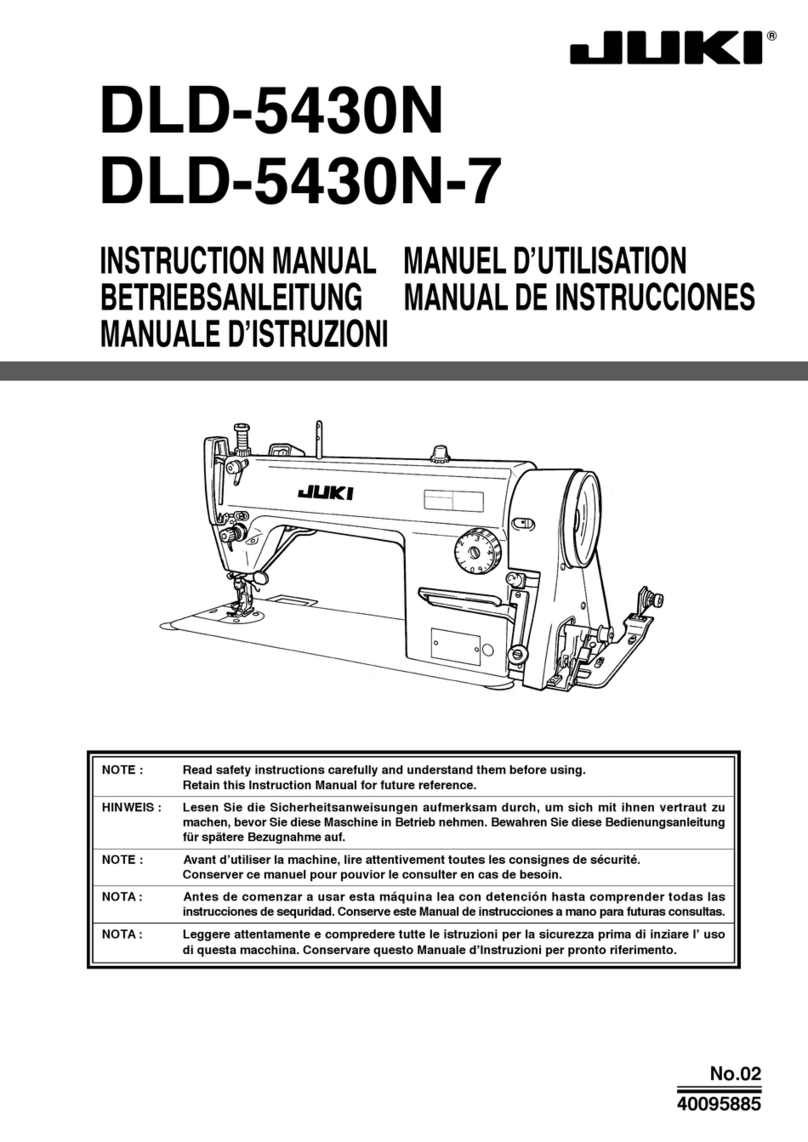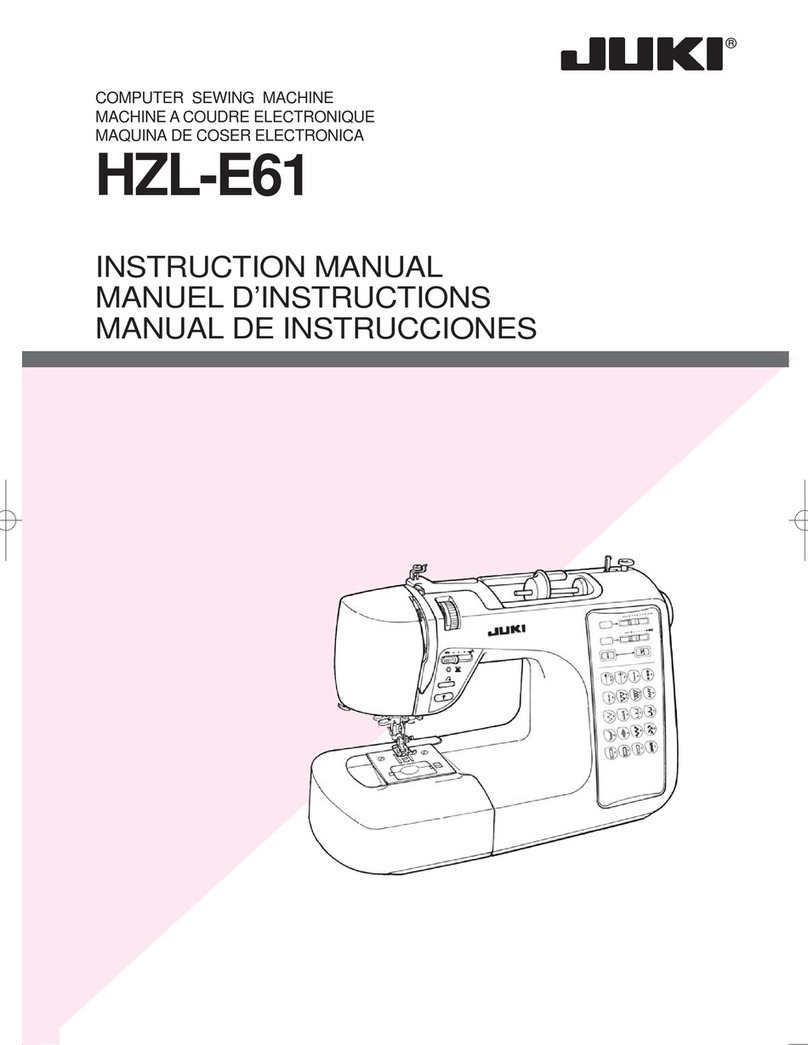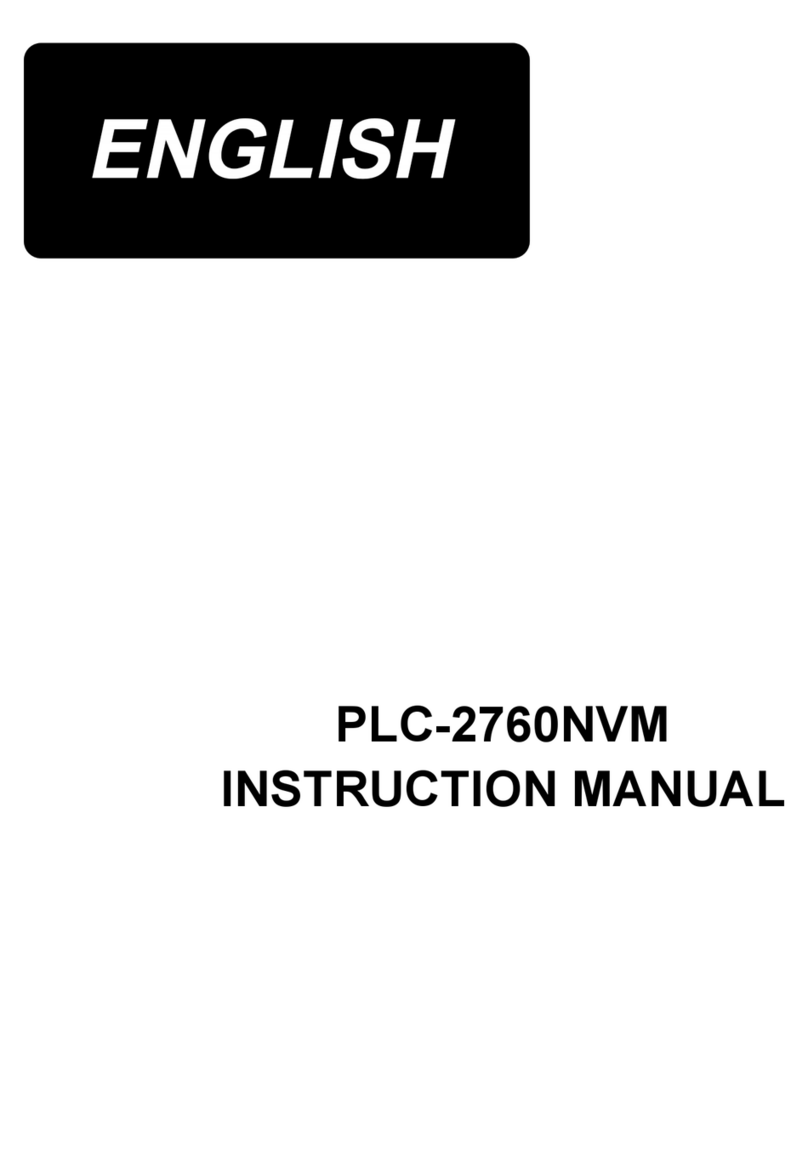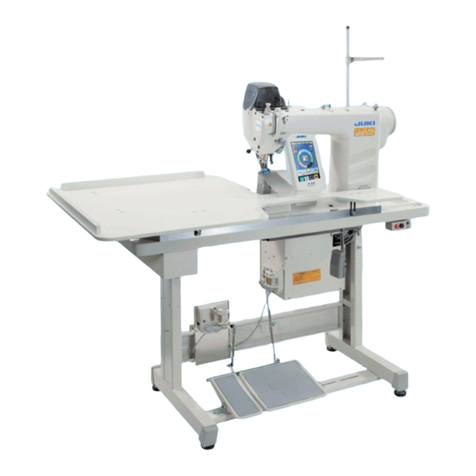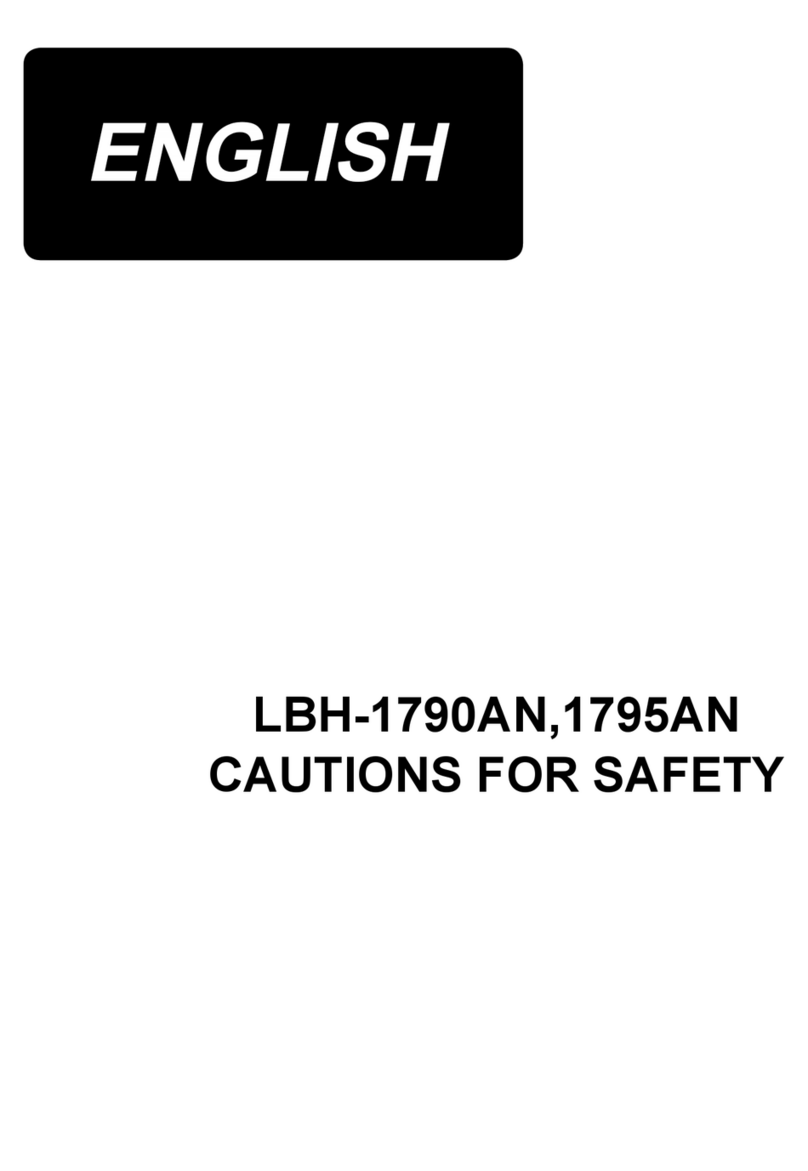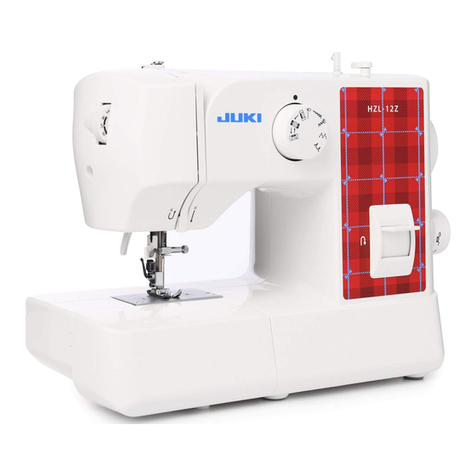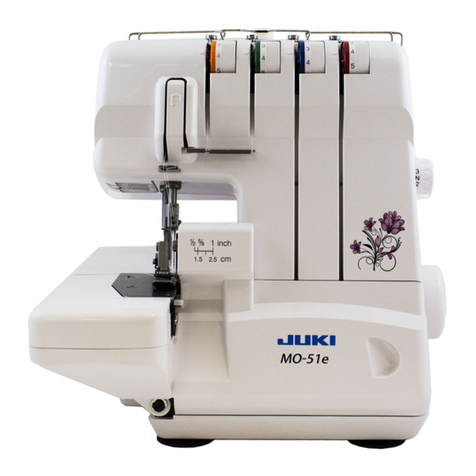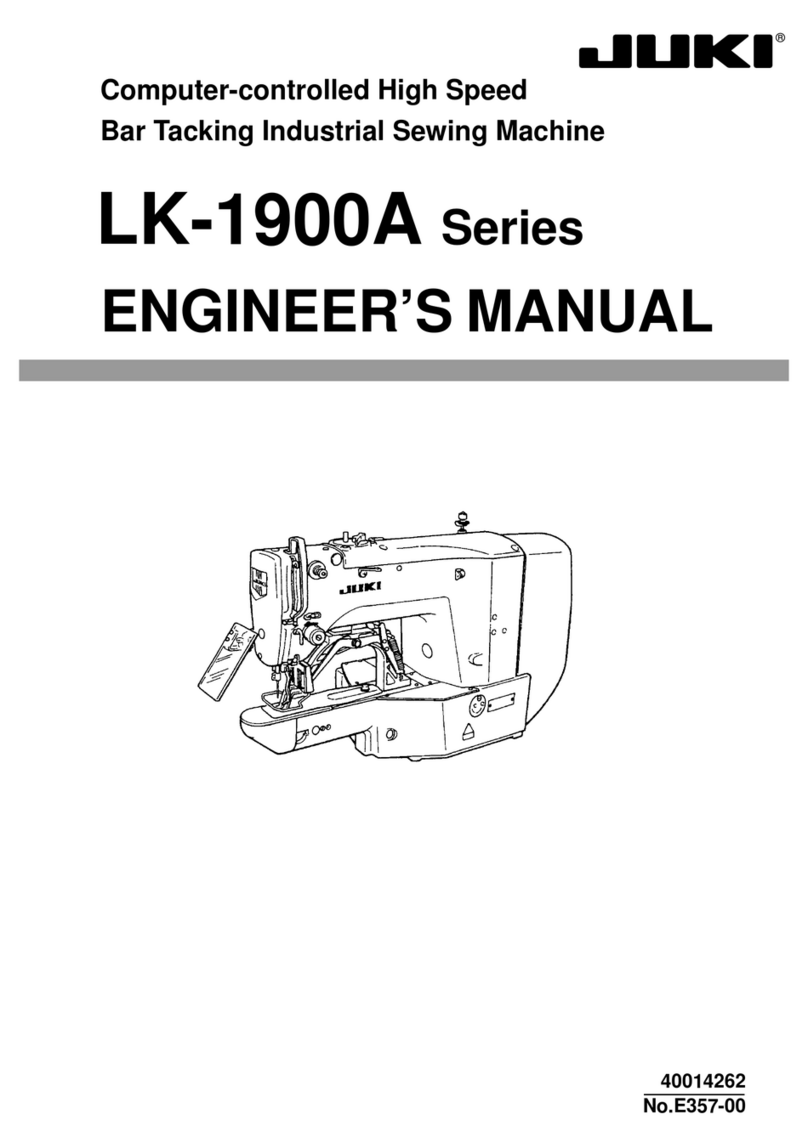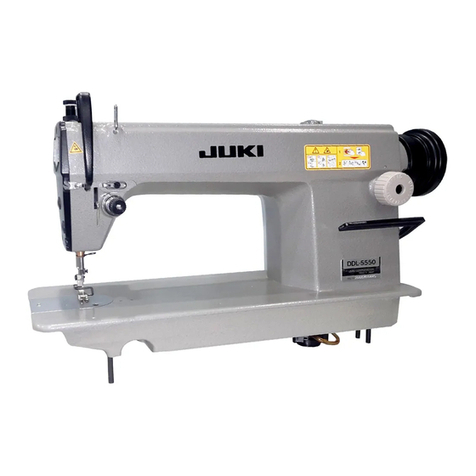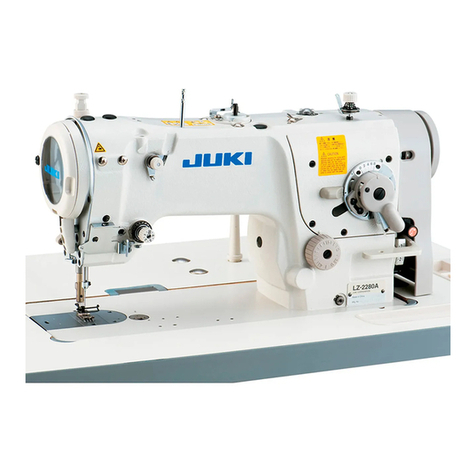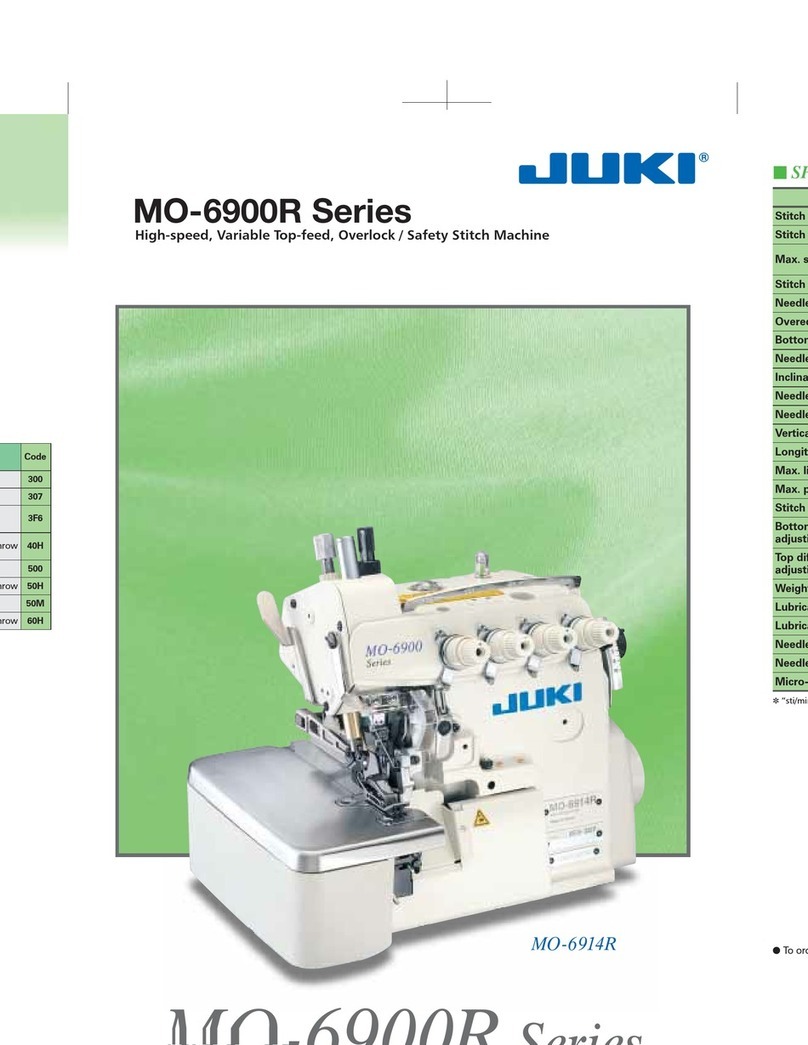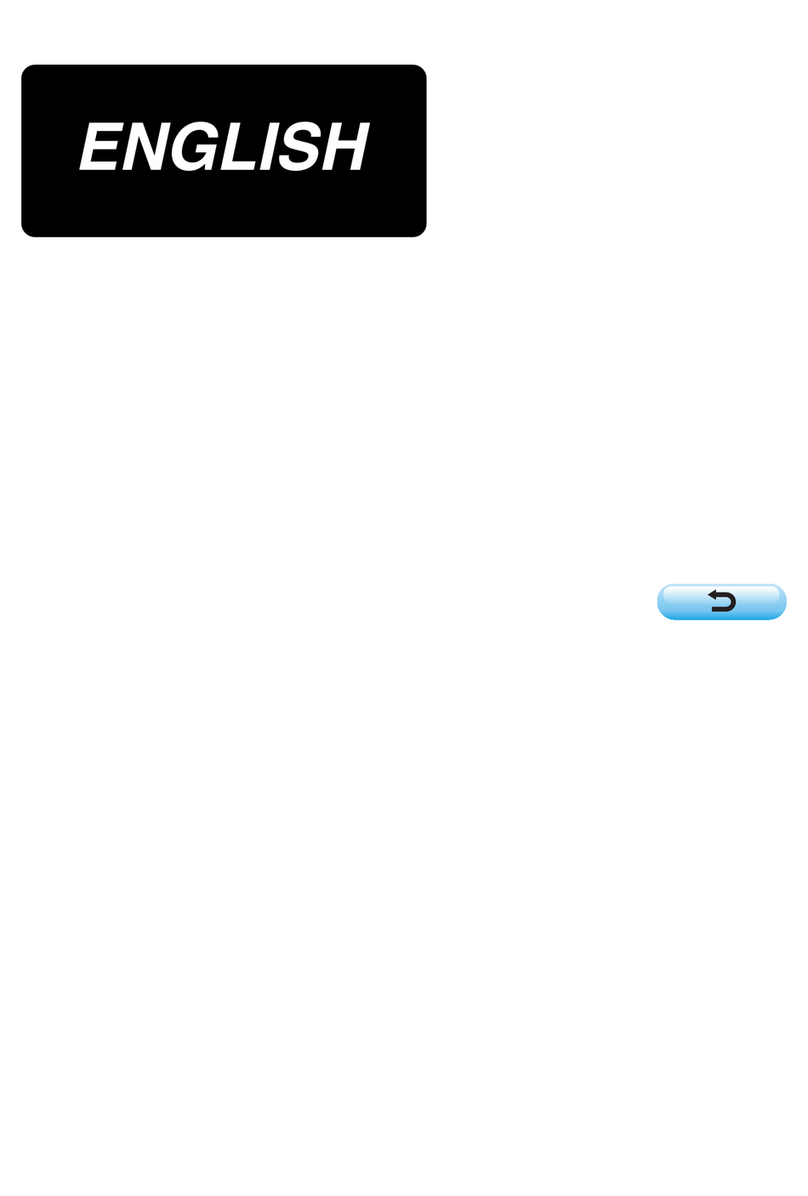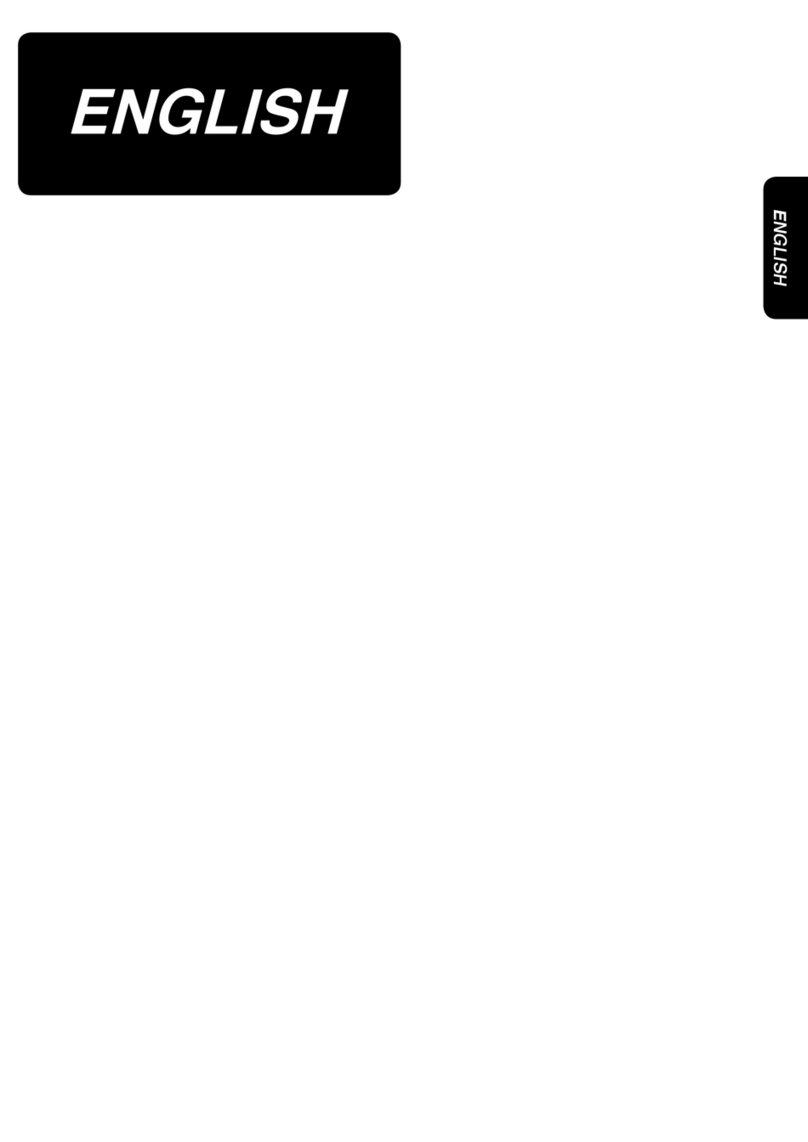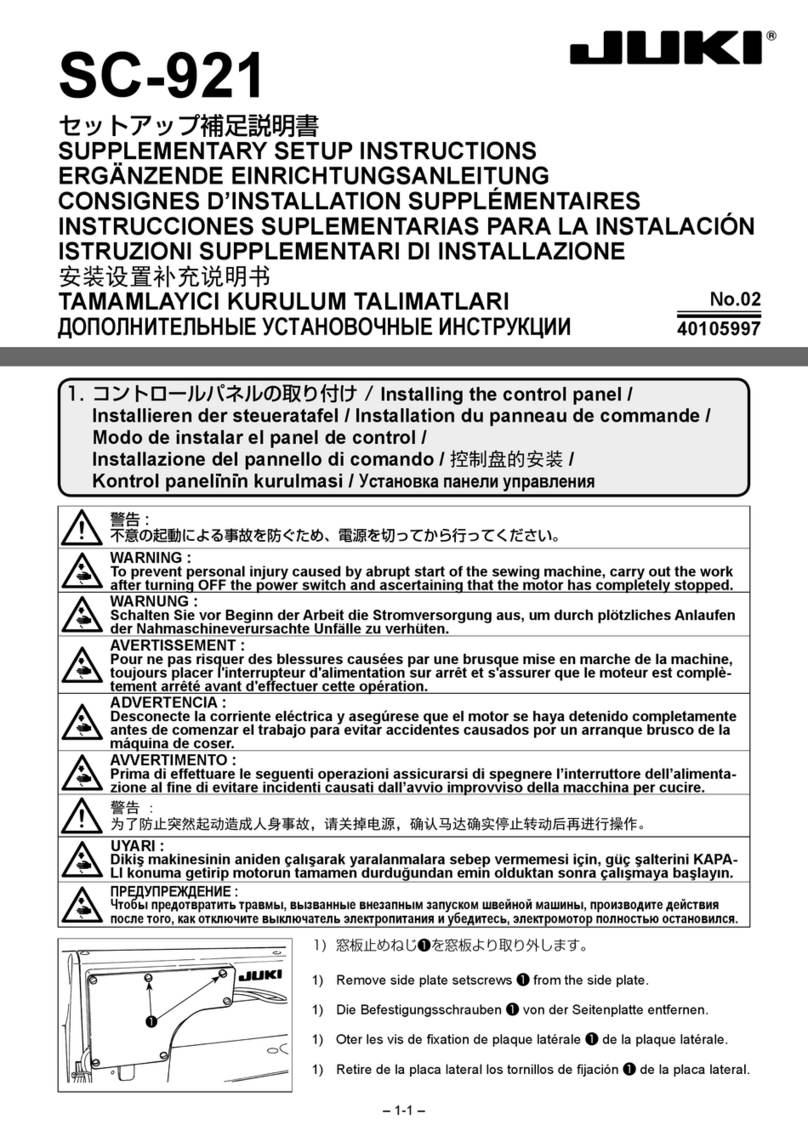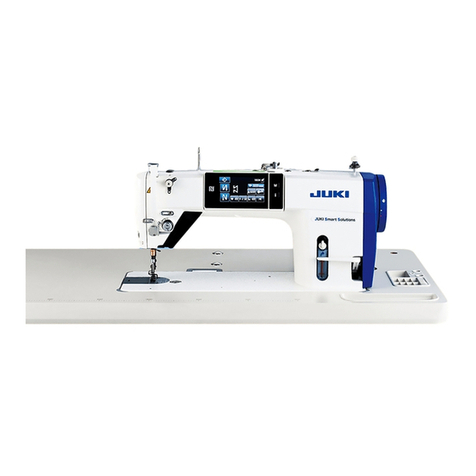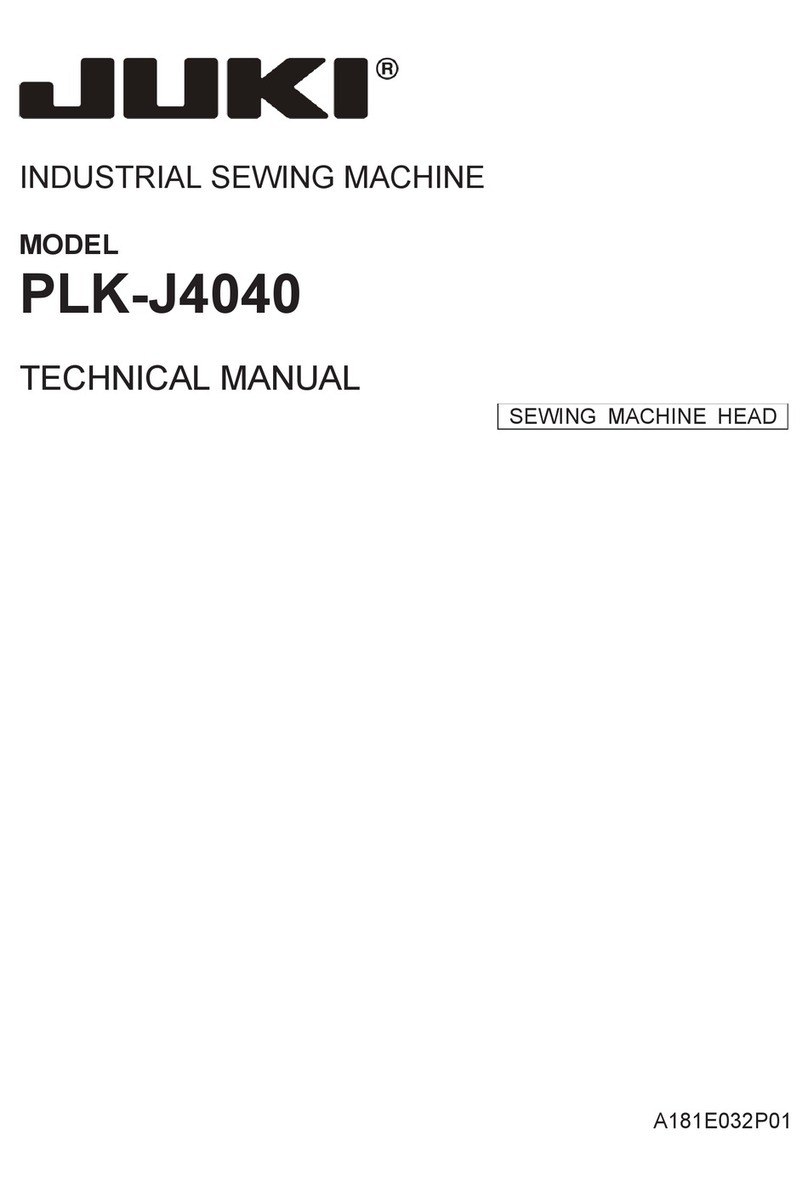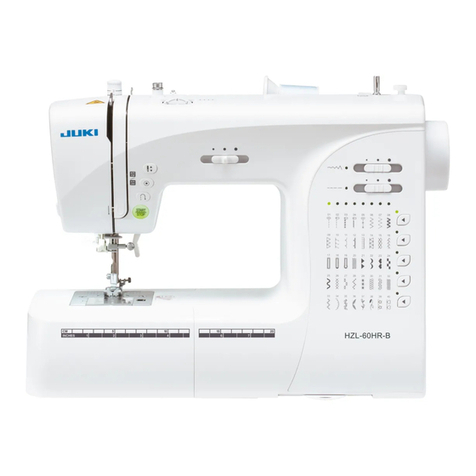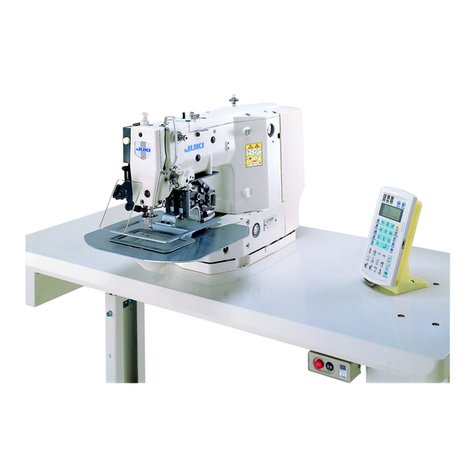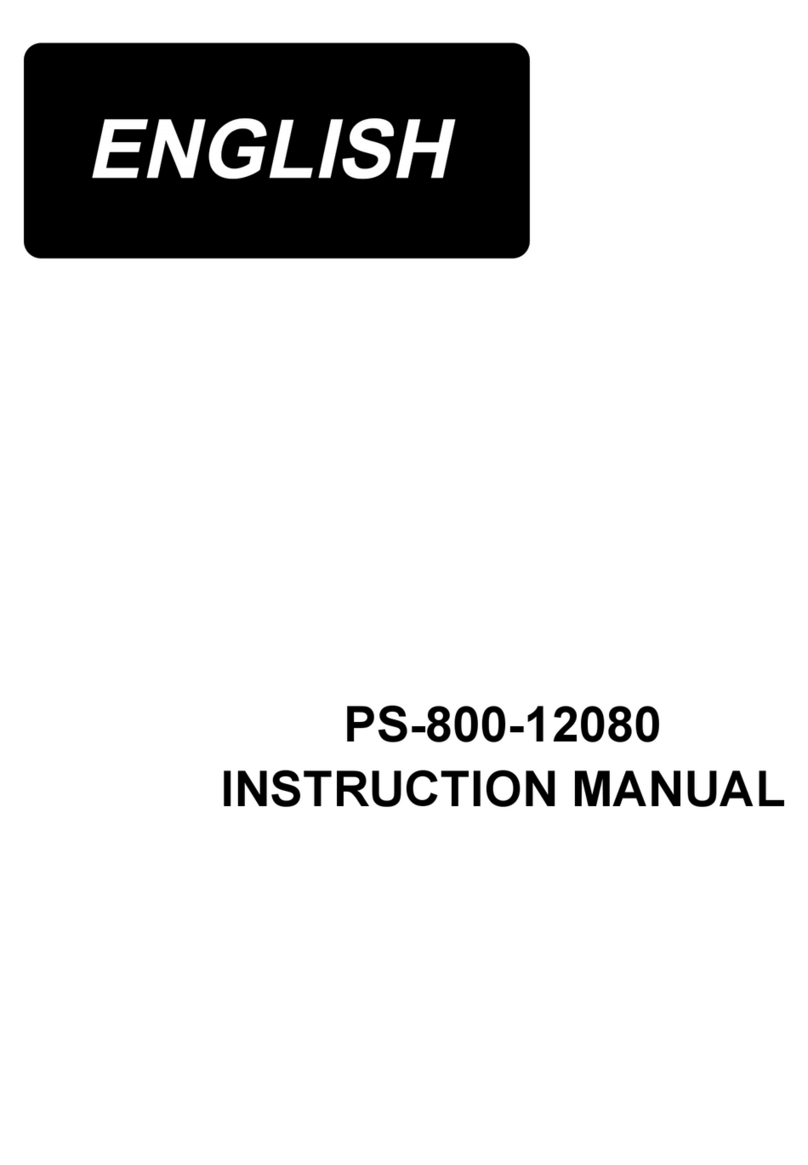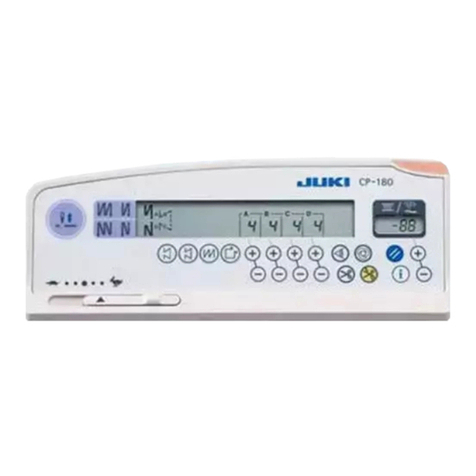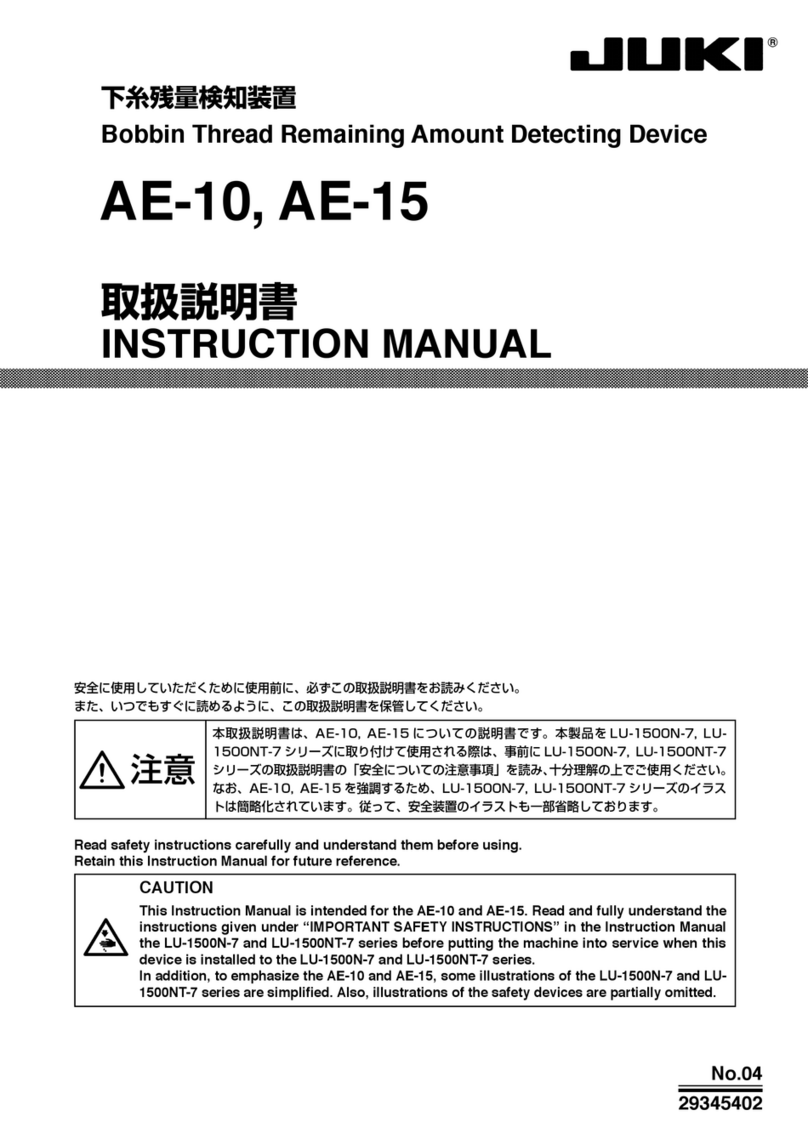– 1 –
No. Application
AMS-210EHS AMS-210ESS AMS-210EHL AMS-210ESL AMS-210EHL AMS-210ESL AMS-210EHL AMS-210ESL AMS-210EHL AMS-210ESL
Sub-class 1306 1510 2206 2210
1 Sewing area X-Direction (right, left) 130mm; Y-Direction (forward, backward) 60mm
X-Direction (right, left) 150mm; Y-Direction (forward, backward) 100mm X-Direction (right, left) 220mm; Y-Direction (forward, backward) 60mm
X-Direction (right, left) 220mm; Y-Direction (forward, backward) 100mm
2 Max. sewing speed 2700rpm (when sewing pitch is 3mm or less)
3 Stitch length 0.1 to 12.7mm (Min. resolution : 0.05mm)
4
Feed motion of feeding frame
intermittent feed (2-shaft drive by stepping motor)
5 Needle bar stroke 41.2mm
6 Needle S type: DP x 5 # 14, H type: DP x 17 # 18
7
Method to lift feeding frame
Pulse motor Air
8 Feeding frame shape Right and left united Right and left separated Right and left united
9 Lift of feeding frame Standard 25mm, Max. 30mm Max. 30mm
10 Intermediate presser stroke Standard 4mm (0 to 10mm)
11 Lift of intermediate presser 20mm
12 Intermediate presser Standard 0 to 3.5mm (Max. 0 to 7.0mm)
DOWN position variable
13
Needle thread clamp device
H type S type H type S type H type S type H type S type H type S type
14 Needle thread tension Active tension (electronic thread tension control mechanism)
15 Hook 2-fold semi-rotary hook
16 Lubrication Plane part: grease, hook part: minute volume lubrication (tank type)
17 Lubricating oil JUKI NEW Defrix oil (equivalent to ISO VG32) (Lubrication system)
18 Grease 1. Penetration No. 2 lithium grease, 2. Templex N2, 3. Juki Grease A, 4. Juki Grease B (Caution)1.
19 EEP-ROM, Smart media
Memory of pattern data • EEP-ROM : Max. 200 patterns (Max. 20,000 stitches/pattern)
•Smart media : Max. 999 patterns (Max. 50,000 stitches/pattern)
20 Temporary stop facility Used to stop machine operation during a stitching cycle.
21 Enlarging/Reducing Allows a pattern to be enlarged or reduced on the X axis Y axis independently when sewing a pattern.
function Scale : 1% to 400% times (0.1% steps)
22 Enlarging/Reducing Pattern enlargement / reduction can be done by increasing / decreasing either stitch length or the number of stitches.
method (Only increase/decrease of stitch length when pattern button is selected and CP-20 is used)
23 Sewing speed limitations 200 to 2,700 rpm (Scale : 100 rpm steps)
Pattern No. selection method
24 Pattern selector facility (EEP-ROM : 1 to 200, Smart media : 1 to 999)
(CP-20 is the scroll type.)
25 No. of sheets counter Up/Down method (0 to 9,999) (IP-400 only)
26 Sewing counter Up/Down method (0 to 9,999)
(Bobbin thread counter)
27 Memory back-up In case of a power interruption, the pattern being used will automatically be stored in memory.
28 2nd origin setting facility Using jog keys, a 2nd origin (needle position after asewing cycle) can be set in the desired position within the sewing area.
The set 2nd origin is also stored in memory. (IP-400 only)
29 Sewing machine motor Servomotor 550W
30 External dimensions 1,200mm (W) x710mm (L) x 1,200mm (H) 1,200mm (W) x770mm (L) x 1,200mm (H) 1,200mm (W) x710mm (L) x 1,200mm (H) 1,200mm (W) x770mm (L) x 1,200mm (H)
(Excluding thread stand) (Excluding thread stand) (Excluding thread stand) (Excluding thread stand)
31 Weight (gross weight) Machine head : 69kg, Control box : 16.5kg Machine head : 73kg, Control box : 16.5kg Machine head : 75kg, Control box : 16.5kg Machine head : 77kg, Control box : 16.5kg
32 Power consumption 500VA
33
Working temperature/humidity
Temperature: 5-35°C, Humidity: 35-85% (no condensation)
34 Supply voltage/frequency Rated voltage ±10% 50 / 60Hz
35 Air pressure used — Standard: 0.35 to 0.4MPa, Max. 0.55MPa
36 Air consumption — 1.8dm3/min (ANR)
37 Needle highest position After the completion if sewing, the needle can be brought up to its highest position.
stop facility
1. Specifications
Model name
Item
(Caution) Grease type, refer to (3) Greasing • lock-tite parts of [10] Maintenance
